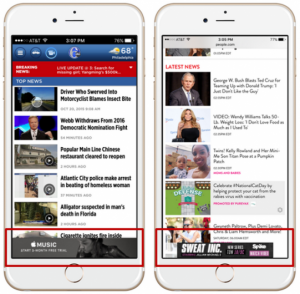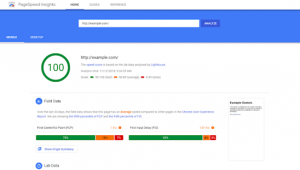
Writing a great blog is both a science and an art. A science because a good blog that converts should follow a system of best practices to optimize its content effectively. These processes give the piece its best fighting chance of breaking through the overcrowded blog market. As for art, well that comes down to either the team working on it, or you assuming the roles of writer, editor and designer, working in harmony to imagine and create a blog that converts.
Science = Art?
Art and science are both attempts to understand and describe the world around us. Forbes writes, “Science = art. They are the same thing.” A blog bridges the gap between the two.
Lance Esplund from the Atlantic further explains, “to understand art, think biology.” Biology is the science dealing with living organisms and art can honestly be classified as that: a living organism. When you break any art down by dissecting its various parts, you discover how its components band together like the anatomy of a body to “contribute to the life of the artwork as a whole”.2 Anatomy is the science identifying the structures of living things. So, to ensure we bring to life a blog to be proud of, come with us on this journey to learn the anatomy of a blog that converts.
1. Topic Conception
The first element of a blog is the idea behind it—its topic. To conceive the topic of a piece, one must ponder and ask themselves a few questions:
- What will the blog be about?
- Where do I begin?
- How do I make something unique?
- How do I even come up with it?
- How do I create something great?
There are many avenues to stroll through but for the sake of clarity, we will only visit a few. If you’re writing a blog for work then there are countless ways to get inspired.
Read your team’s past blog posts and see if there is anything not written about. Find the gaps of what was done before or maybe a subject covered you can expand on? Ask yourself, what part of your work day can you share that is interesting, aligns with goals and will bring value to the reader? Maybe you simply learned a new skill that is making your life easier so you opt to share those useful tidbits of information with the world.
Whatever the case might be, the metaphorical well of knowledge is never dry if you remain motivated, find new angles, and uncover gaps you can fill.
2. Topic Research

After unearthing your topic, the next step is to begin researching it. Explore Google trends to find out its related topics and queries, getting a sense of the current state of the subject. You can further use Google to your advantage researching the topic and reading the various content currently ranking on Google’s search results page (SERP).
Pro tip: Compile a list of industry-related, topic-related, and audience-related keywords to supplement your knowledge and find new research avenues. My favourite free tool is Keyword Tool.
3. Automatic Writing (Info Dump)

With your brain filled with information regarding the topic, you can now put pen to paper or fingers to keyboard and begin writing. Write, write, write and then write some more. Just write what comes to mind relating to the topic. Don’t stop for typos, or to fix formatting issues. No idea is dumb, no avenue not visited. Just write away letting the ideas and inspiration flow through like you are merely a vessel dispersing knowledge. Once you feel like your brain is drained and you cannot think of anything else then you can stop.
4. The Structure
By the time you are done writing your fingers should be steaming. The blog is in its purest form. Just raw and unfiltered knowledge and now comes the fun part. Read through the piece and identify sections as well as the purpose of the blog.
Most people nowadays don’t read but scan through content. Composing a blog that is scannable is one of the key elements of a great blog. So draft subheadings that explain the essence of the sections or what their aim is so that “most people” can skim and scan through, stopping at the section that grabs their attention.
Also, if you haven’t already, you can begin drafting, editing and giving shape to the introduction and conclusion. Just remember to include a hook to draw them further in at the introduction as well as a call-to-action at the conclusion so that every blog can be used as a marketing tool.
Pro tip: Once you have finished grooming your blog, read it through once more and create a title that incites wonder into those about to read on.
5. Sourcing Images
After you have finished the writing and proofing process, give your blog some colour by including high quality images. Add a banner image that gives a preview of what’s to come while also finding rich media for various sections to draw the reader in. There are many free websites where you can find free high quality stock images, some of my personal favourites are Pexels, Pixabay and Unsplash.
Pro tip: Create a free account on Canva to edit and find even more stock imagery.
From conception to reality, all these sections make up a small part of the whole blog. They set the foundation for something great but before you can publish it, there is much more to be done, the behind the scenes of it all. The SEO as well as internal and outbound links mapping, then you can also draft a distribution strategy employing social media to greatly expand the reach of the blog created. But those are topics for another time. All these structures coalesce together in synergy to bring to life a truly beautiful piece of art.
Digital & Social Articles on Business 2 Community
(45)








